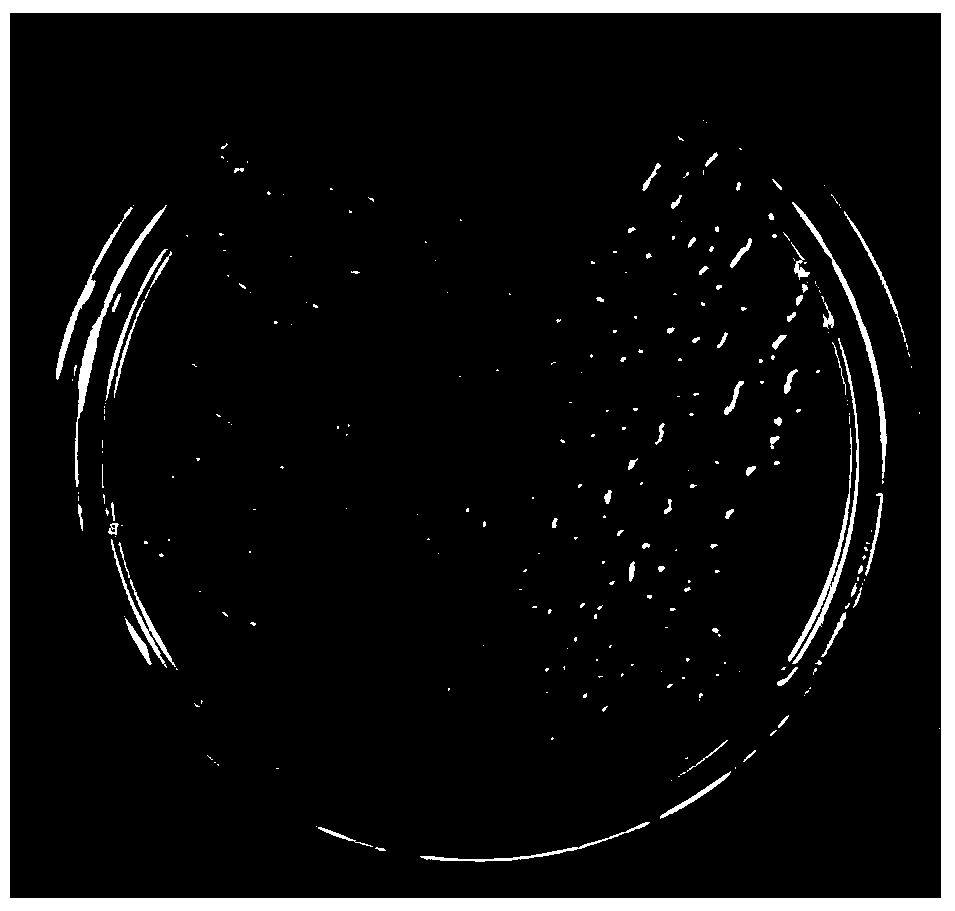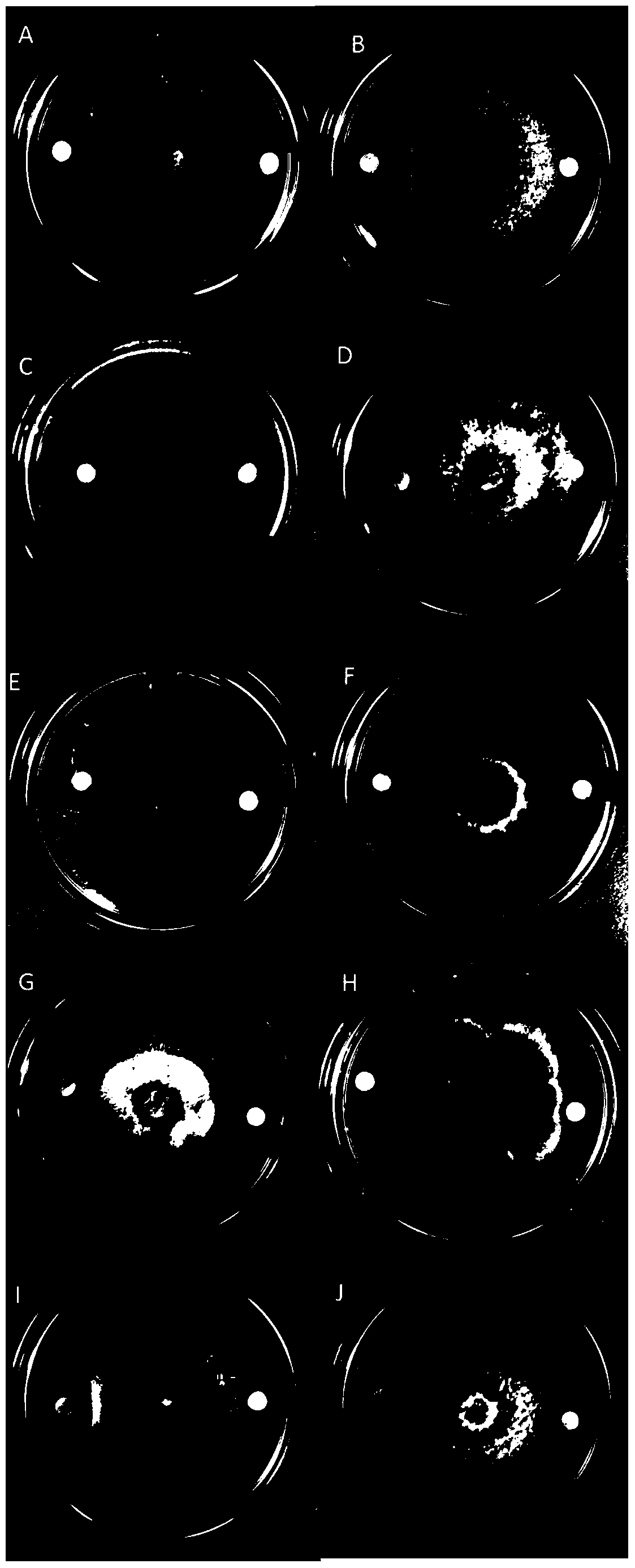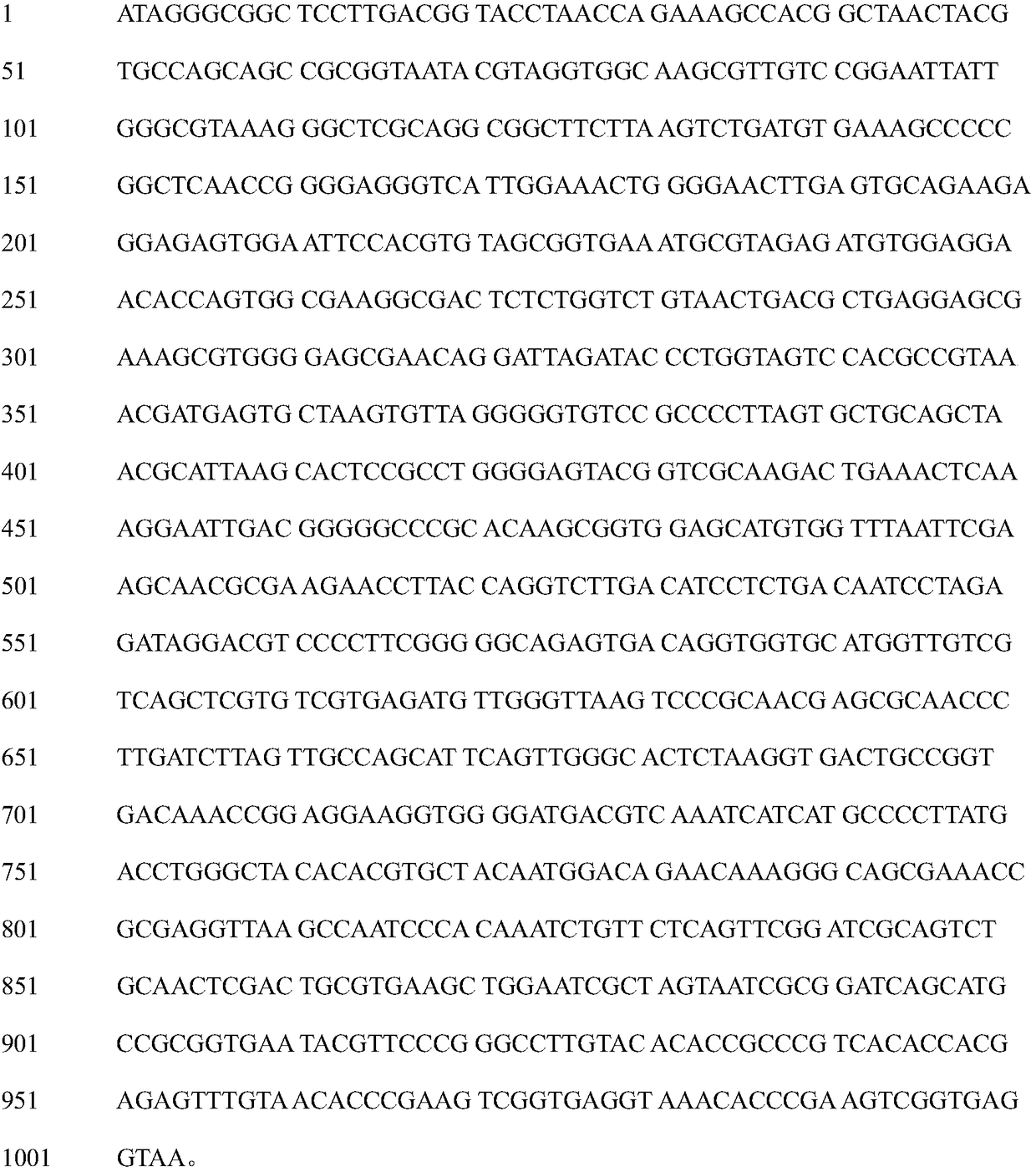Bacillus dy26-004 and its application in controlling plant pathogenic fungi
A bacillus, plant pathogenic technology, applied in the direction of application, plant growth regulator, and microbial-based methods, can solve the problem of fewer microorganisms, achieve simple fermentation medium, obvious antibacterial effect, and wide antifungal spectrum Effect
- Summary
- Abstract
- Description
- Claims
- Application Information
AI Technical Summary
Problems solved by technology
Method used
Image
Examples
Embodiment 1
[0024] Example 1: Isolation and screening of Bacillus sp. DY26-004
[0025] The present invention relates to Bacillus sp. (Bacillus sp.) DY26-004, which was isolated by the applicant from sediment samples collected during the 26th Oceanic Science Expedition in China. , the bacteria are drop-shaped, light white, and the colonies are large, see figure 1 .
Embodiment 2
[0026] Embodiment 2: Bacillus sp. (Bacillus sp.) DY26-004 strain identification
[0027] Bacillus DY26-004 was identified by 16S rRNA gene sequencing. Universal primers were used to amplify the 16S rDNA sequence of strain DY26-004 from the ocean. The sequence of forward primer 27F was: AGAGTTTGATCCTGGCTCAT, and the sequence of reverse primer 1492R was: ACGGCTACCTTGTTACGACTT. The total DNA of Bacillus spp. DY26-004 was used as the PCR amplification template for PCR reaction. The reaction conditions were: denaturation at 94°C for 1 min; annealing at 55°C for 1 min; extension at 72°C for 1.5 min, 30 cycles. The amplified gene was sent to a sequencing company for sequencing. After obtaining the 16S rDNA sequence of the strain, the sequence was compared and analyzed by the National Center for Biotechnology Information (NCBI) and the nucleic acid data in GeneBank (http: / / ncbi.nlm.nih.gov / blast). The results showed that the sequence similarity between DY26-004 16S rDNA sequence a...
Embodiment 3
[0028] Embodiment 3: the mensuration of phytopathogenic fungi antimicrobial spectrum
[0029] The bacillus DY26-004 obtained in Example 1 was activated on the LB liquid medium, then moved into 50 mL LB culture medium with 1% inoculum, and cultured with shaking at 200 r / min for 2 days at 28 ° C, centrifuged and sterilized by filtration. into a sterile fermentation supernatant for later use. The inhibitory activity of Bacillus DY26-004 against 10 plant pathogenic fungi was determined by filter paper method.
[0030] Use a sterile puncher with a diameter of 6 mm to make the test pathogenic fungi into bacterial blocks, place them in the center of the potato solid medium (PDA) plate, and cultivate them at 28°C for 1 to 2 days, and wait for the test pathogenic fungi to grow. After the filament diffuses and grows, place a number of sterilized double-layer filter paper sheets with a diameter of 6mm around each bacterial block. The filter paper is 0.5-1cm away from the edge of the bac...
PUM
 Login to View More
Login to View More Abstract
Description
Claims
Application Information
 Login to View More
Login to View More - R&D
- Intellectual Property
- Life Sciences
- Materials
- Tech Scout
- Unparalleled Data Quality
- Higher Quality Content
- 60% Fewer Hallucinations
Browse by: Latest US Patents, China's latest patents, Technical Efficacy Thesaurus, Application Domain, Technology Topic, Popular Technical Reports.
© 2025 PatSnap. All rights reserved.Legal|Privacy policy|Modern Slavery Act Transparency Statement|Sitemap|About US| Contact US: help@patsnap.com



